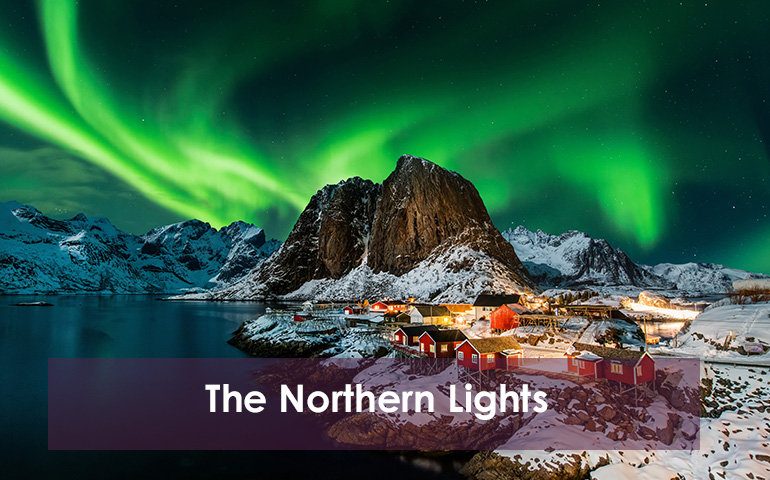
The Northern Lights
by Chris Petry
Earlier this week as I was reviewing a list of potential topics for the day’s blog entry, my exuberant colleague bounced into the doorway of my office with an idea of her own. “Do you already have a topic lined up for this week? How about the Northern Lights? It’s trending right now.” Truth is, I was torn between discussing the benefits of sunblock and the elaborate almost-human funeral practices of elephants. The Northern Lights was a much better idea!
So, what are the Northern Lights? Or, if you’re an astronomer, stargazer, or stickler for Latin etymology: The Aurora Borealis. Well, to cut to the chase, it’s an entirely natural phenomenon caused by rifts or disturbances in the Earth’s magnetosphere which results in the vivid, wavy, routinely green, optical light show we’ve all come to recognize.
What in the world is the magnetosphere? The magnetosphere, according to NASA’s writeup on the subject, is “the region around a planet, dominated by the planet’s magnetic field.” Many planets have one but Earth’s is the most studied and, in our observable solar system, active. It’s the result of a live or active core. Our active core and its resultant magnetic field serve as a force field for cosmic radiation. Occasionally, solar winds displace charged particles within the boundaries of the magnetosphere. The particles then enter Earth’s atmosphere where they are ionized (which means they have an altered charge by gaining or losing electrons), and emit light.
Contrary to popular belief, this scientific phenomenon is not relegated to the North Pole. The same process can be observed at the South Pole. There it’s called the Aurora Australis. One thing is for certain however, if you want the best view or picture of the event, you’ll need to be as close as possible to one of the Earth’s magnetic poles. The further away you are, the less visible the effect. That said, the lights can sometimes be observed (with less brilliance of course) as far as half way to the equator on either side of the magnetic poles. That’s why folks in the Northern and central parts of the US will occasionally see viewing predictions on the scroll of their local news channel.
I’m sure every picture you’ve ever seen, probably taken from someone’s igloo Airbnb, gives you the impression that all charged particles emit shades of green light. However, depending on the altitude, this may not be the case. At the highest altitudes, you’ll catch some red light in there too. At extremely low altitudes, you’ll be treated to blue light. The Blue Light sounds like a Jazz Club.
When can you see the Northern Lights? Last week it was predicted the Aurora Borealis will be somewhat visible in well over a dozen US states. Predictions seem to be softening as of right now, but fear not! The Sun operates in just 11-year solar cycles and this exciting optical and chemical event is far from rare. In fact, it occurs rather frequently throughout its duration. If you always feel you never get the best view from the tristate area, think about planning that visit to Canada, Alaska, Iceland, Greenland, Norway, Sweden, Denmark, Finland, or Scotland the next time a major light show is on the horizon. It’ll be worth it!
Can’t make the trip? How about the next best thing? Speak to a local Berkshire agent about a colorful new home!





